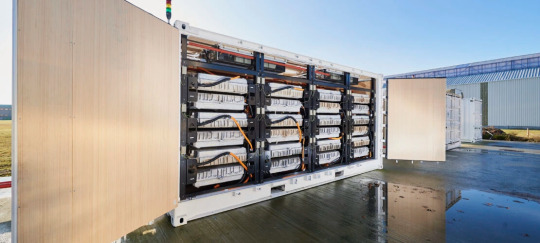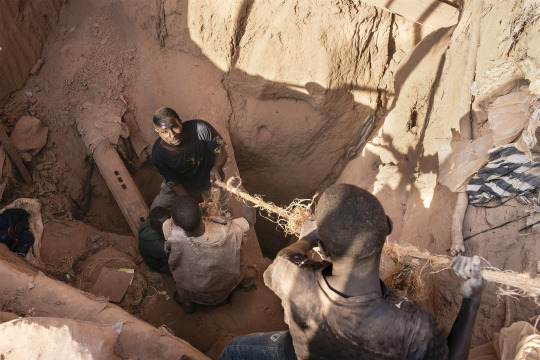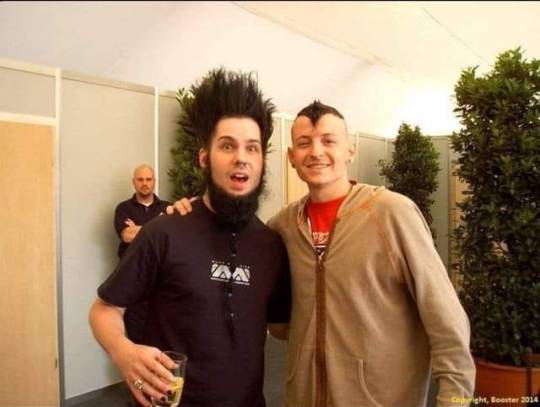#Battery Industries
Text

Join hands with Vacuna and charge up your business.
Get great 𝐑𝐎𝐈 and make your business shine bright.
𝐂𝐚𝐥𝐥 𝘂𝘀: 08410002270, 18002704447
𝗩𝗶𝘀𝗶𝘁 𝘂𝘀: https://www.vacuna.in/
#dealership#batterybusiness#battery#battery manufacturer#BatteryDistributorship#No1 Battery#Best Battery#Battery Industries
0 notes
Text
@ ALL CRASHQUEENS AND KILLJOYS!
i've been in this fandom since 2016, so i've seen headcanons and zone culture and terminology of all kinds.
with that said , i'd like to present the official (unofficial) danger days dictionary. includes everything from zone culture, slang, battery city locations, phoenix witch, even down to bad luck beads and the dust bowl.
for the nitpickers out there, the comics are mainly discarded in this— due to how overwhelming it would be to throw in even MORE overlapping terms and such. some comic characters have been slipped into the regular timeline / universe, just for funsies and a honorary mention. don't come at me, thanks!
REBLOGS RECOMMENDED.
#danger days the true lives of the fabulous killjoys#danger days#zone culture#zone words#party poison#fun ghoul#kobra kid#jet star#mcr#my chemical romance#zone dictionary#phoenix witch#words from the zones#battery city#better living industries#korse#dr death defying#fabulous killjoys#the true lives of the fabulous killjoys#kjrp#danger days headcanons#danger days dictionary#ttlotfk
675 notes
·
View notes
Text

"Remember to get those headphones on, Folks. As we say here in Battery City, 'What you can hear, can't hurt you.'"
#danger days#my chemical romance#better living industries#mcr#bli#true lives of the fabulous killjoys#tlotfk#killjoys#ddttlotfk#battery city#shaun simon#becky cloonan#gerard way#mod post#fake propaganda
115 notes
·
View notes
Text
.::Past the point of no return::.

#party poison#battery city#mcr#better living industries#ooc//yes this is a paladin strait reference let me hyperfixate
41 notes
·
View notes
Text

[In February, 2023], a small warehouse in the English city of Nottingham received the crucial final components for a project that leverages the power of used EV batteries to create a new kind of circular economy.
Inside, city authorities have installed 40 two-way electric vehicle chargers that are connected to solar panels and a pioneering battery energy storage system, which will together power a number of on-site facilities and a fleet of 200 municipal vehicles while simultaneously helping to decarbonize the UK’s electrical grid.
Each day Nottingham will send a combination of solar-generated energy — and whatever is left in the vehicles after the day’s use — from its storage devices into the national grid. The so-called “vehicle to grid” chargers deliver this energy just when it’s needed most, during peak evening demand, when people are home cooking, using hot water or watching TV. Later, the same chargers pull energy from the grid to recharge the vehicles in the wee hours of the night, when folks are sleeping and electricity is cheaper and plentiful.
“We are trying to create a virtual power station,” says Steve Cornes, Nottingham City Council’s Technical Lead. “The solar power and battery storage will help us operate independently and outside of peak times, making our system more resilient and reducing stress on the national grid. We could even make a profit.” ...
After around a decade, an EV battery no longer provides sufficient performance for car journeys. However, they still can retain up to 80 percent of their original capacity, and with this great remaining power comes great reusability.
“As the batteries degrade, they lose their usefulness for vehicles,” says Matthew Lumsden, chairman of Connected Energy. “But batteries can be used for so many other things, and to not do so results in waste and more mining of natural resources.”
The E-STOR hubs come in the form of 20-foot modular containers, each one packed with 24 repurposed EV batteries from Renault cars. Each hub can provide up to 300kW of power, enough to provide energy to dozens of homes. One study by Lancaster University, commissioned by Connected Energy, calculated that a second life battery system saved 450 tons of CO2 per MWh over its lifetime...
Battery repurposing and recycling is set to play a massive role over the coming years as the automobile industry attempts to decarbonize and the world more broadly attempts to fight waste. The production of EVs, which use lithium-ion batteries, is accelerating. Tesla, for example, is aiming to sell 20 million EVs per year by 2030 — more than 13 times the current level. In turn, 12 million tons of EV batteries could become available for reuse by 2030, according to one estimate.
“Over the next decade we are going to see this gigantic wave,” says Jessica Dunn, a senior analyst at the Union of Concerned Scientists. “Companies are recognizing this is a necessary industry. They need to ramp up infrastructure for recycling and reuse.”
-via Reasons to Be Cheerful, March 13, 2023
#ev#ev charger#electric vehicle#electric cars#batteries#battery recycling#lithium ion battery#auto industry#sustainability#circular economy#recycling#reuse#uk#nottingham#england#good news#hope
216 notes
·
View notes
Text
If you are in the UK and can take care of chickens, please consider offering a chance at an actual life to ex-battery hens who will otherwise be killed at their first moult at about six months old because it slightly reduces their egg production.
Industrial farming is a fucking dystopian nightmare. Please do your best to help the survivors.
https://www.bhwt.org.uk/hen-adoption/?fbclid=IwZXh0bgNhZW0CMTEAAR3LD4wrazUwVJBQEIkeZs_PLoZRNwgm3J5pWdDOaIo27ebb7f7IvA5-oUM_aem_AcUiXo1Rk8o8af-NRxXlCB0XjKjLcdGoMqx9_eAMgl5tEVR0rGhBxOWS8NIzFe1YYWkOYFILaVLyvBX33wmcRXb6
31 notes
·
View notes
Text

Children still mining cobalt for gadget batteries in Congo
A CBS News investigation of child labor in cobalt mines in the Democratic Republic of Congo has revealed that tens of thousands of children are growing up without a childhood today – two years after a damning Amnesty report about human rights abuses in the cobalt trade was published. The Amnesty report first revealed that cobalt mined by children was ending up in products from prominent tech companies including Apple, Microsoft, Tesla and Samsung.
There's such sensitivity around cobalt mining in the DRC that a CBS News team traveling there recently was stopped every few hundred feet while moving along dirt roads and seeing children digging for cobalt. From as young as 4 years old, children can pick cobalt out of a pile, and even those too young to work spend much of the day breathing in toxic fumes.
What's life like for kids mining cobalt for our gadgets?
So, what exactly is cobalt, and what are the health risks for those who work in the DRC's cobalt mining industry?
What is cobalt?
Cobalt – a naturally occurring element – is a critical component in lithium-ion, rechargeable batteries. In recent years, the growing global market for portable electronic devices and rechargeable batteries has fueled demand for its extraction, Amnesty said in its 2016 report. In fact, many top electronic and electric vehicle companies need cobalt to help power their products.
The element is found in other products as well.
"Cobalt-containing products include corrosion and heat-resistant alloys, hard metal (cobalt-tungsten-carbide alloy), magnets, grinding and cutting tools, pigments, paints, colored glass, surgical implants, catalysts, batteries, and cobalt-coated metal (from electroplating)," says the U.S. Centers for Disease Control and Prevention.
More than half of the world's supply of cobalt comes from the DRC, and 20 percent of that is mined by hand, according to Darton Commodities Ltd., a London-based research company that specializes in cobalt.

Health risks of chronic exposure
According to the CDC, "chronic exposure to cobalt-containing hard metal (dust or fume) can result in a serious lung disease called 'hard metal lung disease'" – a kind of pneumoconiosis, meaning a lung disease caused by inhaling dust particles. Inhalation of cobalt particles can cause respiratory sensitization, asthma, decreased pulmonary function and shortness of breath, the CDC says.
The health agency says skin contact is also a significant health concern "because dermal exposures to hard metal and cobalt salts can result in significant systemic uptake."
"Sustained exposures can cause skin sensitization, which may result in eruptions of contact dermatitis," a red, itchy skin rash, the CDC says.
Despite the health risks, researchers with Amnesty International found that most cobalt miners in Congo lack basic protective equipment like face masks, work clothing and gloves. Many of the miners the organization spoke with for its 2016 report – 90 people in total who work, or worked, in the mines – complained of frequent coughing or lung problems. Cobalt mining's dangerous impact on workers and the environment
Some women complained about the physical nature of the work, with one describing hauling 110-pound sacks of cobalt ore. "We all have problems with our lungs, and pain all over our bodies," the woman said, according to Amnesty.
Moreover, miners said unsupported mining tunnels frequently give way, and that accidents are common.
Miners know their work is dangerous, Todd C. Frankel wrote late last month in The Washington Post.
"But what's less understood are the environmental health risks posed by the extensive mining," he reported. "Southern Congo holds not only vast deposits of cobalt and copper but also uranium. Scientists have recorded alarming radioactivity levels in some mining regions. Mining waste often pollutes rivers and drinking water. The dust from the pulverized rock is known to cause breathing problems. The mining industry's toxic fallout is only now being studied by researchers, mostly in Lubumbashi, the country's mining capital."

"These job are really desired"
Despite the dangers and risks of working as miners in the cobalt industry, at least of the some miners in the Congo "love their jobs," according to Frankel.
"When I talked to the miners there, none of them want to lose their jobs or give up their jobs. They love their jobs," Frankel said Tuesday, speaking on CBSN. "In a country like Congo, mining is one of the few decently paying jobs to be had there, and so they want to hold onto these jobs."
They also want fair treatment, decent pay, and some safety, "and they would love for their kids to not work in the mines," he said.
"It's a poverty problem," Frankel said. "These parents I talked to – they don't want their kids working in these mines. The problem is that their school fees – schools cost money, and you know, food costs money, and they sort of need their kids to work in there."
Poverty also drives children into the mines instead of school – an estimated 40,000 of them work in brutal conditions starting at very young ages.
The thousands of miners who work in tunnels searching for cobalt in the country "do it because they live in one of the poorest countries in the world, and cobalt is valuable," Frankel wrote in the Washington Post article.
"Not doing enough"
CBS News spoke with some of the companies that use cobalt in their lithium-ion batteries. All of the companies acknowledged problems with the supply chain, but said they require suppliers to follow responsible sourcing guidelines. Apple, an industry leader in the fight for responsible sourcing, said walking away from the DRC "would do nothing to improve conditions for the people or the environment."
Read company responses here
Amnesty said in November, however, that "major electronics and electric vehicle companies are still not doing enough to stop human rights abuses entering their cobalt supply chains."
"As demand for rechargeable batteries grows, companies have a responsibility to prove that they are not profiting from the misery of miners working in terrible conditions in the DRC," the organization said. "The energy solutions of the future must not be built on human rights abuses."
An estimated two-thirds of children in the region of the DRC that CBS News visited recently are not in school. They're working in mines instead.
CBS News' Debora Patta spoke with an 11-year-old boy, Ziki Swaze, who has no idea how to read or write but is an expert in washing cobalt. Every evening, he returns home with a dollar or two to provide for his family.
"I have to go and work there," he told Patta, "because my grandma has a bad leg and she can't."
He said he dreams of going to school, but has always had to work instead.
"I feel very bad because I can see my friends going to school, and I am struggling," he said.
Amnesty says "it is widely recognized internationally that the involvement of children in mining constitutes one of the worst forms of child labour, which governments are required to prohibit and eliminate."
#cobalt#PD Congo#PDR Congo#cobalt mining by children#amnesty university#The toll of the cobalt mining industry on health and the environment#Congo Economic Theft#minerals#rare earth minerals#tesla#iphones#cellphone batteries#ev batteries#lithium batteries#child labour#forced child labor#poverty#systemic racism
47 notes
·
View notes
Text
The late Wayne Static and Chester Bennington back in 2004

#rip wayne static#in memory of wayne static#industrial metal#nu metal#groove metal#alternative metal#static x#deep blue dream#battery#rip chester bennington#in memory of chester bennington#hard rock#alternative rock#electronic rock#heavy metal#post grunge#pop rock#linkin park#rap rock#dead by sunrise#grey daze#kings of chaos#rock music#stone temple pilots#grunge music#inner demons#mens mental health
70 notes
·
View notes
Text
What Percentage of Cars Sold in 2023 Were Electric?
The automotive industry has been rapidly shifting towards electric vehicles (EVs), driven by increasing environmental concerns, technological advancements, and government incentives. The year 2023 marked a significant milestone in this transition. This transition has raised the question: What Percentage of Cars Sold in 2023 Were Electric? Let’s dive into the data to understand the impact and…

View On WordPress
#automotive industry#automotive trends#battery production#battery technology#car manufacturing#car market trends#car sales 2023#charging infrastructure#charging networks#China EV market#Clean Energy#cobalt#consumer acceptance#electric cars#electric mobility#electric vehicles#environmental awareness#Environmental Impact#Europe EV market#EV adoption#EV incentives#EV maintenance#EV technology#EVs#Ford#future of cars#General Motors#global sales#Government Incentives#green alternatives
2 notes
·
View notes
Text
The only reason why the internet sucks is because of how you feel about it. It doesn't suck because other people use it.
#discourse#text post#personal#stoicism#tw depressive#BTW personal comment very personal from me but#shitty non-free JS websites that kill the environment by making your fan go brrr#are literally the consequence of masses of people using service that are subject to DDoS#even non-free is a security measure with examples being Apple or Startpage#so i mean#bad web design is because other-people-use-it#...so instead of blaming others maybe buy your own blog space or self-host (easier said than done)#and if u think vegans are hypocrites for having byproducts in batteries#maybe stop paying the industries that kill these animals by the billions that creates an abundance of by-products
3 notes
·
View notes
Text
I love you THC I love you CBD I love you CBN I love you CBG I love you CBC I love you all the other minor cannabinoids. I love you cannabis. :^)
#this isnt about oo look at me im a cool stoner#this is about how weed has been saving my ass the last few days and how no matter how much it costs i sure do just love going to#and being in dispensaries#truly my element#love that my last couple jobs have been in the cannabis industry like yessss lets keep that goingggg#anyways. atm i have my THC my CBD and my CBN vapes all on my chest and brother i am playing them like a pan flute#not really i have 2 batteries and 3 tips this is actually ultra tragic but it is what it is#sorry for the stoner post but also not cause honestly weed is truly just one of my favorite topics :^) it just sucks that it makes you like#instantly come off as a douche or just kinda. drug addict-y to anyone who doesnt enjoy it#which i totally understand and i dont like acting that way#but like. damn i do love it for myself :^) yessiree i love me my marijuana.#anyways. byeee
3 notes
·
View notes
Text
#good news#science#climate change#environmentalism#carbon capture#batteries#environment#innovation#industries#renewable energy#energy efficiency#electricity
8 notes
·
View notes
Text
Lately, I don't even think Battery City has an environment. It's all artificial. Like it's just enshrouded in this big dome. There is a ceiling that replicates what time of day it's supposed to be. As curfew approaches, the "sun" starts to set. As the time to wake comes, the "sun" starts to rise. It doesn't seem real. It's almost liminal and surreal in nature like you're walking behind yourself in a third-person simulation.
Inside the ceiling there are cameras to survey citizens from above. The ceiling and the flies are BLI's most successful way of spying on its consumers. That's not to say the cats, birds, and dogs aren't spying on you.
#danger days#true lives of the fabulous killjoys#my chemical romance#mcr#battery city#better living industries#gerard way#mod post#headcanons
92 notes
·
View notes
Text

34 notes
·
View notes
Text
lucas making a good point is the most shocking thing about this situation. him being unable to further explain that point is completely unsurprising. vettel fans are completely correct in pointing out that hes a hypocritical fash-lover who only dropped his support of bolsonaro when he was one of the people being negatively affected.
however it doesn't change the point that for once in his life, somehow, lucas is correct in this one situation. seb has always had weirdly hostile reactions to formula e. he's made a statement on the sport without understanding how the cars work and a quick look at the opinions of people working in the industry about the influence and importance formula e has to the manufacturing of electric road cars (specifically gen 3's battery atm).
seb just made a comment from an uneducated place, based on bias towards the series hes had since his rbr days and lucas went the wrong way about correcting him and did so from a incredibly hypocritical position that hes failed to ever address or explain.
#formula e#fe#sebastian vettel#lucas di grassi#to make it clear i like seb and very much dislike di grassi#i just think sebs wrong here#dont mention the lithium batteries theyre used in all electric devices that can be charges phones computers you name it#an alternative needs to be found so end lithium mining but using that as a gotcha without addressing the industrys that dominate lithium#mining is disingenuous
60 notes
·
View notes
Text
"It seems like a new Silicon Valley startup could change the face of the battery industry forever by utilizing 3D printers to print solid-state batteries.
Solid-state batteries have advantages over lithium-ion because they aren’t flammable, they’re more easily recycled, work in extreme cold, and have greater energy density.
Solid-state batteries have traditionally been difficult to machine manufacture. But by using 3D printing arrays filled with powder, Sakuu systems can make these batteries not only using 40% less material, but in almost any shape the customer might want.
An electric bike could be powered by a battery that hugs a section of the central chassis, or a smartphone’s battery could run all the way around the frame of a circuit board. These unorthodox shapes are just one of the many advantages that Sakuu believe they can offer.
“Many people have built cells in the lab, but they have not been able to scale,” Sakuu CEO and founder Robert Bagheri told Fast Company. “Our vision started with that scalability in mind.”
The array, known as a Kavian, is much smaller than the traditional, “roll to roll” battery manufacturing methods, and because the powder loaded into the 3D printers can be extremely precise, there’s a 40% reduction in materials usage—a huge cost savings over competitors.
The batteries they print can be charged to 80% in just 15 minutes.
Because they can be printed in any shape, all kinds of clever innovations are possible, in all kinds of industries from e-mobility products to wearables and small devices. The company is even working with an aviation company that wants solid-state batteries for their aircraft with holes through the middle of it to help with heat management."
-via Good News Network, 2/27/23
#battery#batteries#tech industry#electricity#recycling#3d printing#lithium ion battery#good news#hope
170 notes
·
View notes